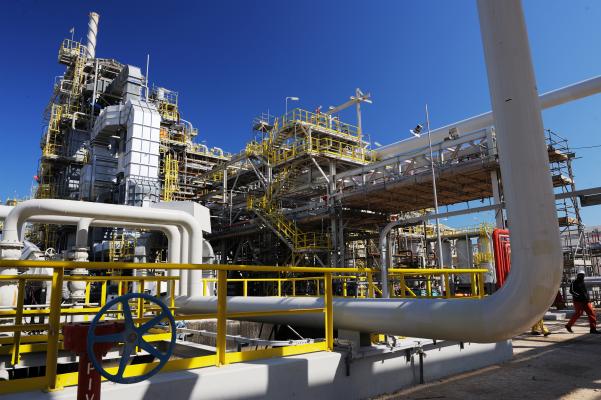States near the nation’s largest shale plays are expected to bring dozens of of new natural gas-fired power online over the next few years.
BTU Analytics’ analysis of electric power growth trends found 32.3 GW of natural gas-fired power plants are in various stages of construction and are expected to begin operating during or before 2025.
Additional natural gas plants are in the permitting or planning stages. Most of the new natural gas capacity is being built to supply power to the PJM and MISO regional transmission operators and public utilities in the South Eastern United States, reports BTU Analytics.
Growing Gas Boom?
Natural gas combined cycle is the most advanced proven technology in power generation, but its growth has been suppressed in the last decade or more by politicians forcing more expensive, intermittent, supplies onto the grid, says Robert Bradley, Jr. Ph.D., CEO of the Institute for Energy Research.
“The great Texas freeze, the most-costly power crisis in U.S. history in terms of lives lost, rate spikes, and outage costs, reflected a lack of dependable, well-maintained gas capacity because of renewables forcing,” Bradley said. “Utilities and investors noticed.
“With a failure of Biden’s Build Back Better (BBB) plan, with its 14th extension of wind power’s Production Tax Credit, and with growing opposition to wind projects by local residents, the natural gas boom could accelerate,” Bradley said. “The same is true for the solar Investment Tax Credit in BBB and opposition to large solar arrays.”
‘Consumers Will Benefit’
Plans for additional gas-fired power generation in the Northeast are great news because natural gas is dependable, inexpensive, and available 24/7, regardless of weather conditions, says Gary Stone, vice-president of engineering at FiveStates Energy in Dallas.
“Natural gas easily transported through a huge network of safe and efficient pipelines throughout the country – power can be generated in any regional location,” Stone said. “The fact that these plants are being built in the center of America’s largest gas-producing region means consumers there will benefit from abundant supply and cheap prices.
“Most renewable energy sources are ineffectual and power part-time suppliers; wind turbines, for instance, operate far less than 50 percent of the time, and most people don’t know there is a minimum wind speed for electricity production and a relatively low maximum speed above which turbines shut down to avoid damage,” Stone said. “When you need the most electricity in Texas, for example, in August, in the middle of the day, is at precisely the time when the wind does not blow in west Texas, where most wind turbines are located.
Solar is only a little better than wind for reliability, says Stone.
“Solar is equally sporadic; it produces no power at night and only limited power on cloudy, overcast or rainy days; for instance, during daylight hours, available energy-producing sunlight averages 60 percent in Texas, and only a little more in Arizona, Nevada, and New Mexico,” Stone said. “Clean, efficient natural gas is the leader in America’s energy, and consumers are the beneficiaries.”
‘Keep the Lights On’
Most of these gas plants are being built in the Eastern United States, in highly regulated markets with vertically integrated utilities, says Brent Bennett, Ph.D., the policy director for Life:Powered, an initiative of the Texas Public Policy Foundation.
“Utilities understand what it takes to keep the lights on, and in the absence of extremely cheap, scalable, long-duration energy storage for wind and solar, fast-ramping natural gas plants are needed,” Bennett said. “Utilities make more money building wind and solar, but they also have regulatory obligations to maintain resource adequacy, hence, they need more power from natural gas.”
What is not being noted is that approximately 25 GW of on-demand power plants, primarily coal and nuclear plants, are going to be retired in these regions in the next four years, says Bennett.
“The electricity supplied by reliable coal and nuclear plants is increasingly being replaced by a dual system of natural gas plus wind and solar,” Bennett said. “Cheap natural gas is making this switch possible, but the switch is not saving ratepayers money.
“Emissions regulations and wind and solar subsidies are driving the switch, and, while there are marginal emissions gains to be had, ratepayers in these states are forced to bear the cost of more infrastructure,” Bennett said.
‘Diverse Energy Supplies Are Essential’
The large scale power outage that struck Texas in the winter of 2021 shows the need for a broad array of types power sources, says Bennett.
“Diverse energy supplies are essential to providing affordable, reliable electricity, and, as Texas showed during Winter Storm Uri, a grid that is more reliant on natural gas is more fragile than a grid with a more balanced mix of gas, nuclear, and coal,” Bennett said. “Coal and nuclear have long-term fuel storage that is more weather resilient and is not compromised by competing demand for heating like natural gas is.
“Wind and solar can provide cheap electricity on the margins, but they cannot replace baseload power plants that are needed to run all the time, therefore, a grid solely reliant on wind, solar, and gas, is fundamentally more expensive and less reliable than a grid with a balanced mix of gas, coal, and nuclear,” Bennett said. “Unfortunately, the energy system as a whole is becoming less diverse and, as a result, we may get lower-emissions, but we are giving up everything else to get it.”
Kenneth Artz (KApublishing@gmx.com) writes from Dallas, Texas.
